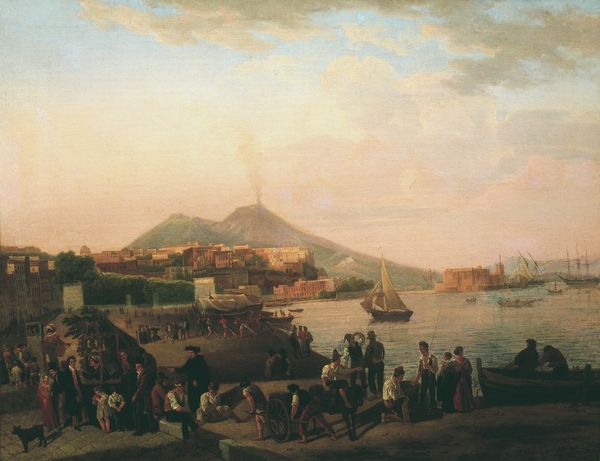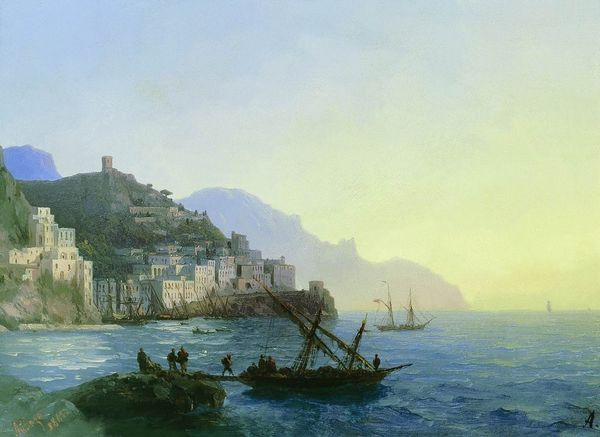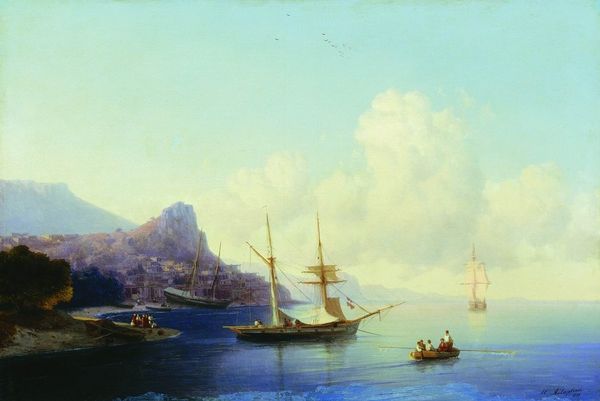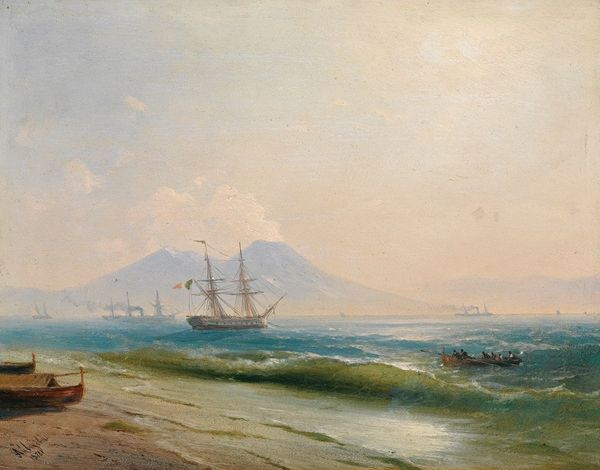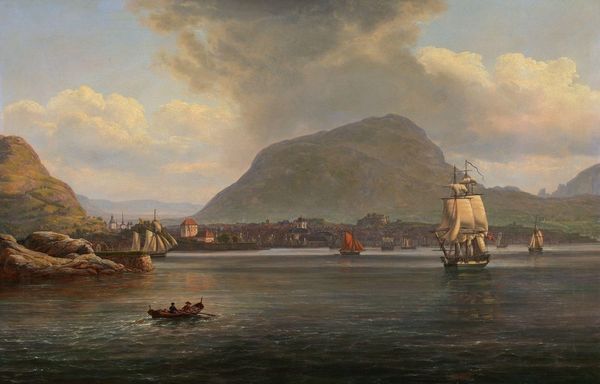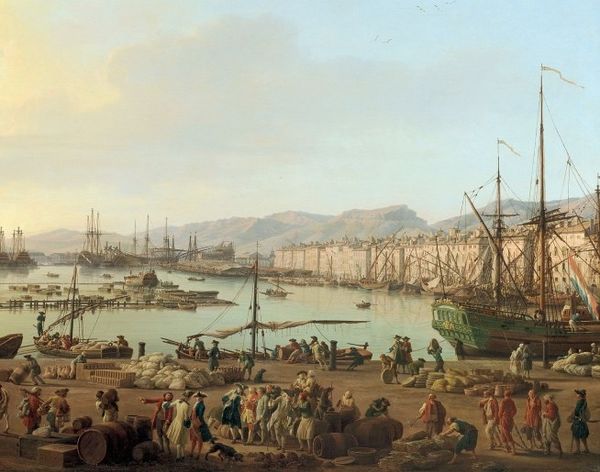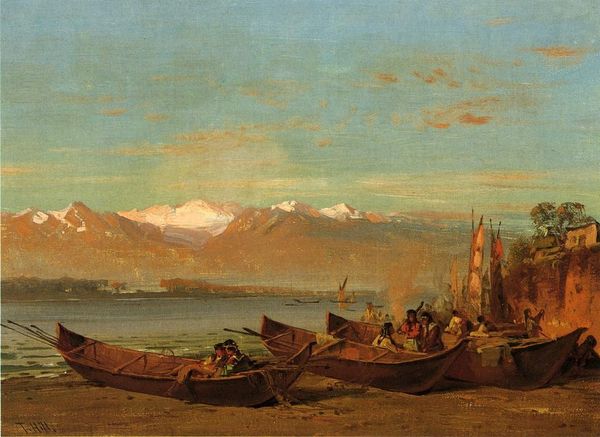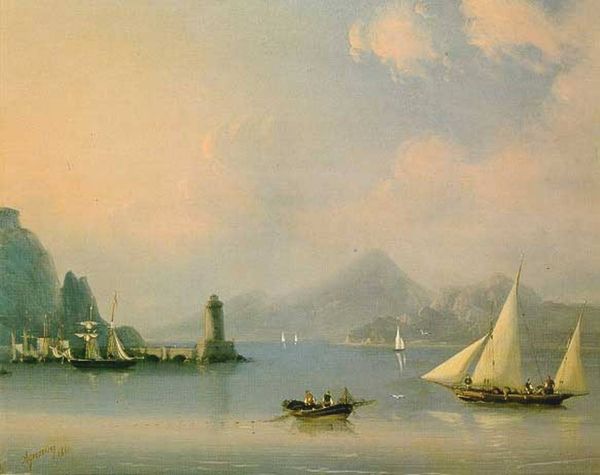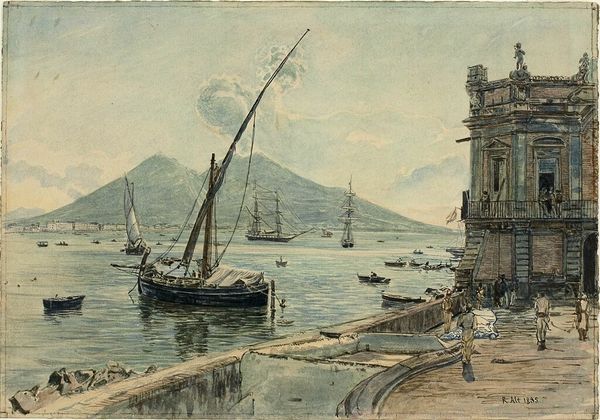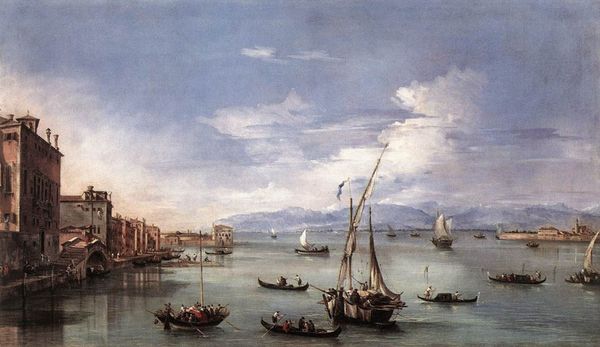
plein-air, oil-paint
#
plein-air
#
oil-paint
#
landscape
#
oil painting
#
romanticism
#
cityscape
#
watercolor
Dimensions: 53 x 66.5 cm
Copyright: Public domain
Curator: Let's delve into Rudolf von Alt’s "The Port of Naples with Vesuvius," painted in 1836. It’s currently housed in the Belvedere in Vienna. Editor: Immediately, the painting’s light and the clarity of the details strike me. The textures of the stonework in the foreground against the calm sea – there's a strong sense of place, but almost...artificial. It's highly rendered, smoothed. Curator: Absolutely, that clarity is deliberate. Von Alt situates the port of Naples within a historical narrative, subtly romanticizing daily life alongside the imposing backdrop of Vesuvius. He seems invested in illustrating Naples’ bustling activity and perceived timelessness. Note how race and class intersect at the port as the merchant and working class meet on equal grounds here. Editor: Right, the composition really draws your eye across the scene, leading you from the activity on the pier to the ships and finally to the volcano. The oil paint application seems precise, creating an almost porcelain-like finish. How does that precision relate to plein-air practices typically focused on materiality, imprecision and the openess of natural landscapes? Curator: The open air technique serves not simply to reproduce nature, but to highlight the relationship between human activity and environment and their convergence within a shared space. Romanticism frequently portrayed nature as sublime and overwhelming. In this work, it instead domesticates Vesuvius into an exotic backdrop, thus implying not only an environmental hierarchy but one of power. Editor: You see, the painting has a palpable air. Everything, even Vesuvius, feels somehow crafted, deliberately positioned. Think about what’s absent, too – any sign of the grit, the true labor, and potential suffering associated with a busy port, yet visible with raw oil paints. Curator: Yes, that tension between what's shown and what's omitted speaks volumes about the privileged gaze shaping the work. The labor is idealized; class disparities are minimized in favor of the aesthetic experience of the informed tourist. Editor: Ultimately, by choosing certain perspectives while deliberately omitting others, both painter and society reinforce social frameworks and perceptions. Looking closely at the making of things allows us to begin understanding them as less objective reality and more the deliberate choices of individual artists. Curator: Considering both the artwork and its historical-cultural framing can offer valuable entry points into examining how art mediates not only history but power and social reality. Editor: A powerful lesson. Thank you!
Comments
No comments
Be the first to comment and join the conversation on the ultimate creative platform.
